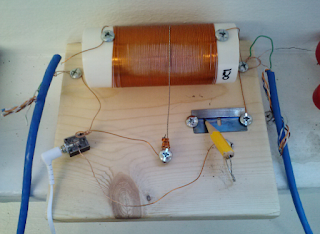If you are uninterested in my battle and detective work against e. coli and
only want to talk Newton’s Law of Cooling, skip down to paragraph 6. I
understand Newton’s law of cooling is way more interesting.
Starting at 2 am today, I woke up with a horrible stomach
ache. I believe my morning from 2 am-6 am was a result from an evil army of
microscopic, hairy Mic n’ Nikes- I looked up what e. coli looks like. I constantly
forget about and do not give enough respect to our microscopic world that can
overtake so easily.
I have two suspect sources: I sprouted some alfalfa sprouts in my magic
sprouter. I am now afraid of my beautiful cup full of alfalfa, and sadly I
think I may just compost them. Or, I also tried eating dandelion leaves for my
first time, which I first washed in the rain collector barrel we have. Either I
am allergic to dandelion leaves, which I think is like being allergic to
lettuce- so unlikely. Or, the NPR program over how rain barrels are e. coli
collectors is sadly true.
Anyway, I think e. coli ruined my morning pretty horribly. Never
fear though; my students had lessons today yet. I hunched over my computer on
the bathroom floor putting together lesson plans. It was sad because there are three
weeks of school left, so the crunch time is upon me to get all that I want
done. I prepared so well on Saturday night and had today laid out perfectly,
only to hand it all over in dry-heaved, butchered form.
Anyway, I slept in hard and woke up feeling a lot better (:,
but still not wanting to move around a lot. So, of course the mind starts to nag
at you about all of the things I could do. Three things nagged the most: 1.) Writing
a month overdue thank you- check. 2.) Writing a blog since it has been months-
doing it, check! And 3.) correcting some papers- oh yes, always those; never
check. Never L.
I figured I would take the time to share a recent lesson. It
is in progress, so it is rough. I love having my students make websites. I love
it. So, for our final project to close up our Calculus course, I am having them
review an application of integration we went over through a fudge making
project. They will be making a nerdy website by bringing in calculus calculations
to calculating the time at which the fudge needs to cool.
I only have 7 more days with them. Two of which go to taking
a test, so five. The
first outline for this project is down below:
Task 1: My
students at first had no idea what I meant by task one. Which to be honest I
was peeved about. Was my objective not clear? Did they not know they should
research about fudge making in order to do the task “CREATE THE INSTRUCTIONS
FOR MAKING THE BEST FUDGE!” I got over myself though. I realize my instructions
are vague. I had to prompt them, with too sarcastic of questions like “So
you guys know all it takes to write instructions on MAKING THE BEST FUDGE.” I
had the questions from the like “Are recipes good enough for task 1?” My response was “No. They need to find some tips and secrets." Then one students found a
great resource (the first link I provided) in the links down below. In a nutshell, they say the key to smooth fudge is in the COOLING and the WHIPPING. These were the resources
I hoped they would come across:
1.) http://main.kitchendaily.com/2010/03/03/secrets-to-smooth-fudge/
2.) http://www.exploratorium.edu/cooking/candy/fudge-story.html
3.) http://www.kincaidbooks.com/Candy/PerfectFudge.htm
Task 2: We tested over Newton’s Law of cooling as an
application to integration a couple months back, so I handed back there old
test, and we discussed and journalled. Then we did the referenced problem which
is as follows.
“46.) When an object is removed from a furnace and
placed in an environment with a constant temperature of 80o F, its
core temperature is 1500o F. An hour later after it is removed, the
core temperature is 1120o F. Find the core temperature 5 hours after
the object is removed from the furnace.”
Task 3: I think
the essential questions are the hardest part. We so far just discussed the two
that I did as examples. We decided we are going to do a few batches to see how
the rate at which it cools varies depending on the type of fudge it is. The
types of fudge they listed: Cookies N’ Cream; Peanut butter; and regular. We
are going to go with a standard room temperature. We also said we could do it
on another day where the room is warmer (we do not have air conditioning at our
school).
I will let you know how the rest of our discussion goes.
I see us taking two days to come up with more questions and
write the protocol for the experiment.
We will take three to actually do the fudge making and
website making. The roles for the website making can be the instructions for
the fudge, the recipe writing, and the typing out of the protocol. Together,
while the fudge is cooling and while we are eating, the calculations and the
reflections can be pounded out and put up.
Stay tuned!
